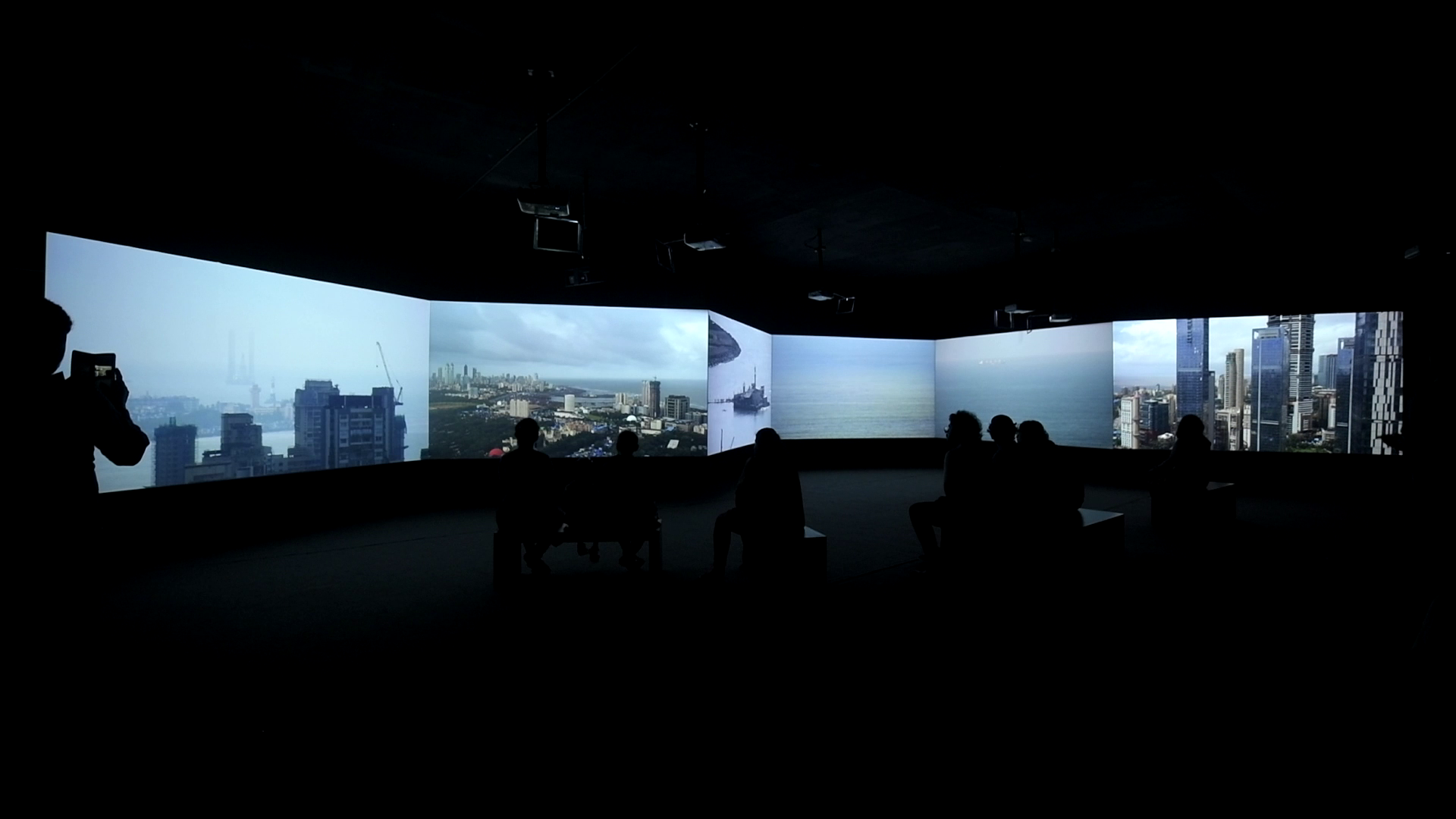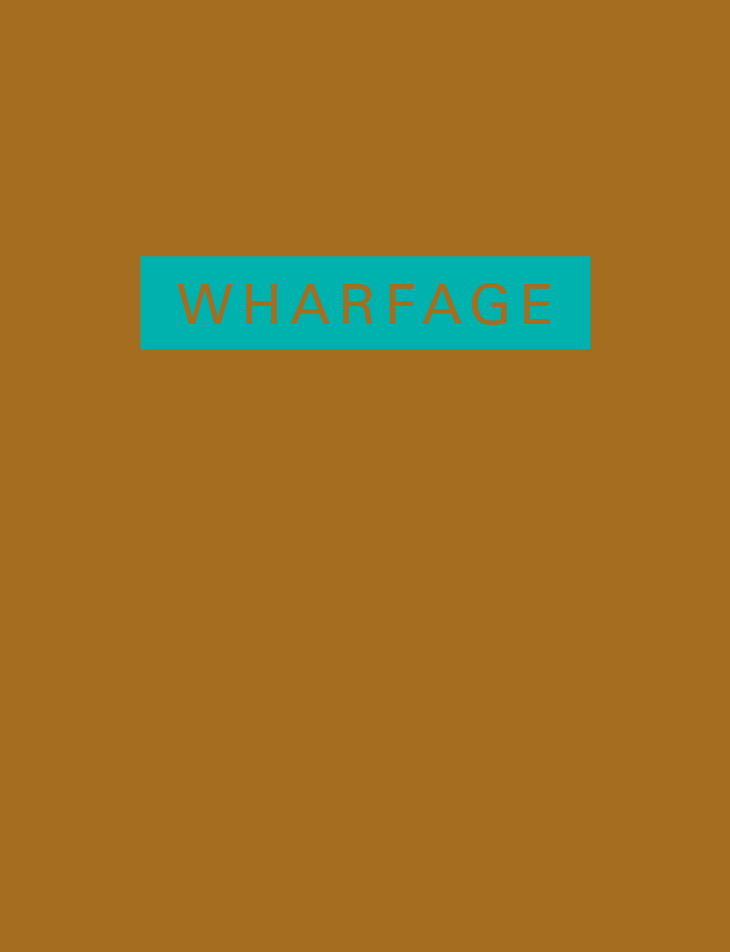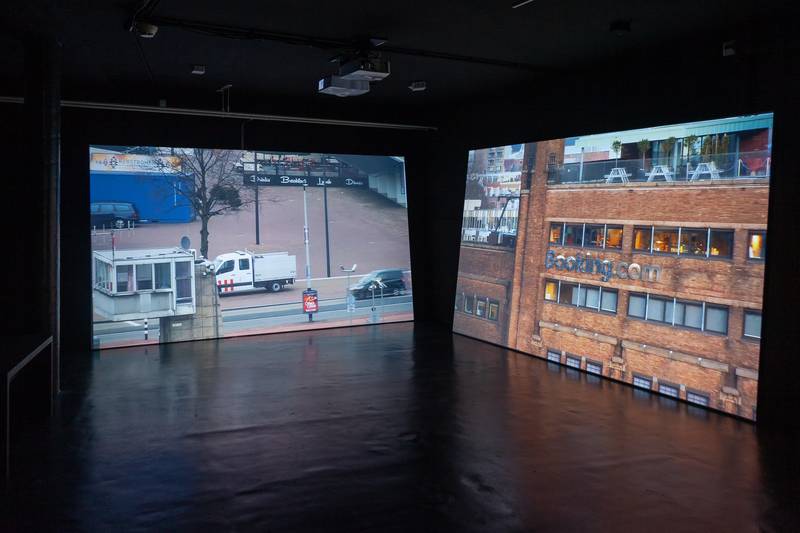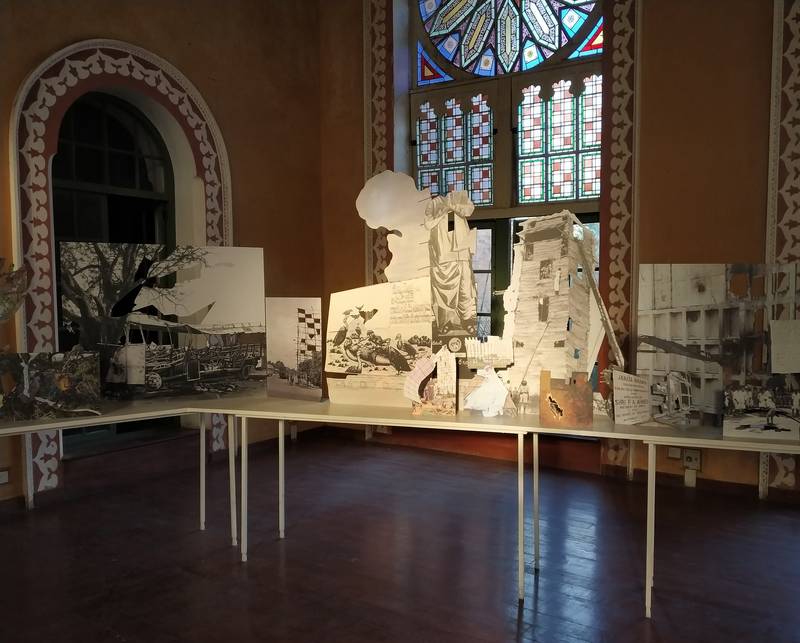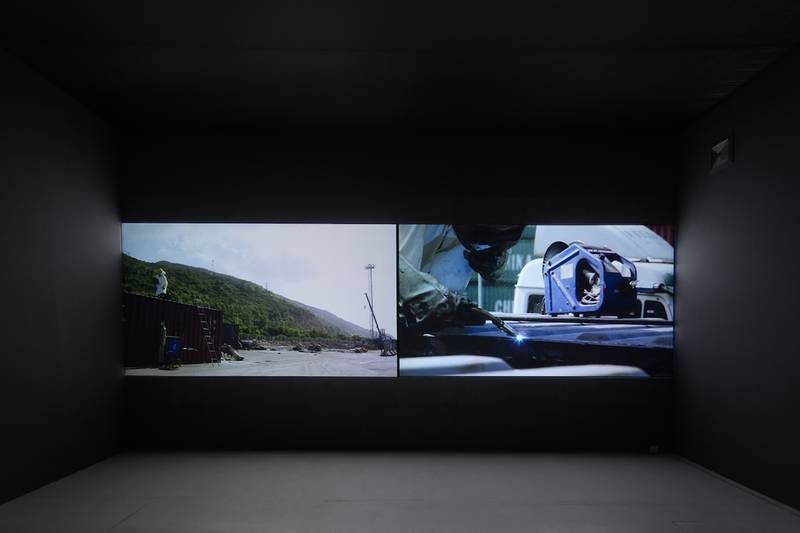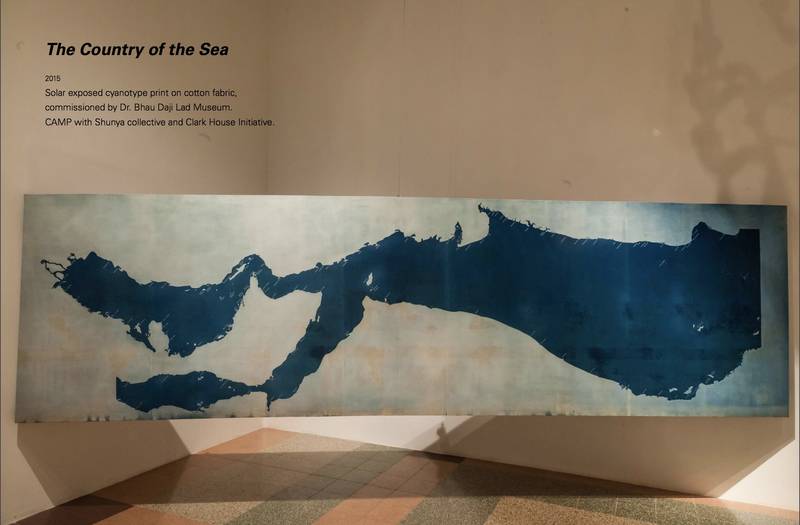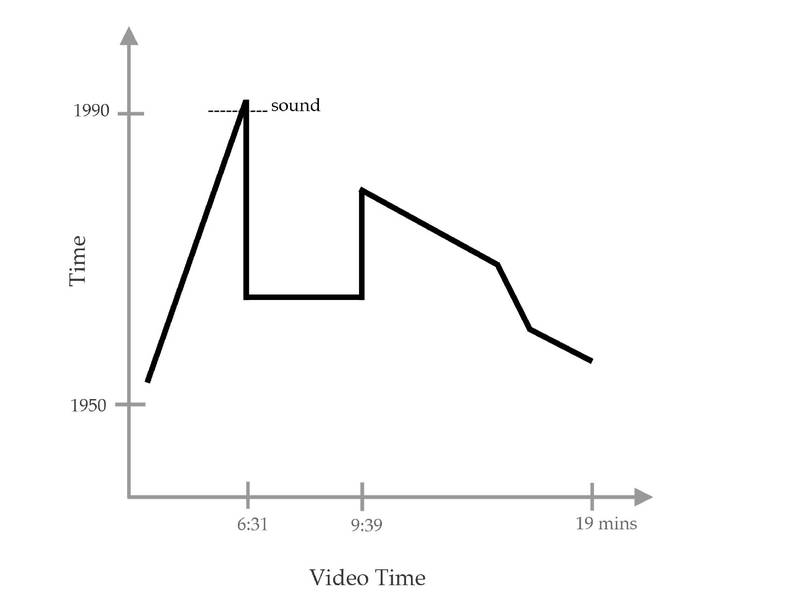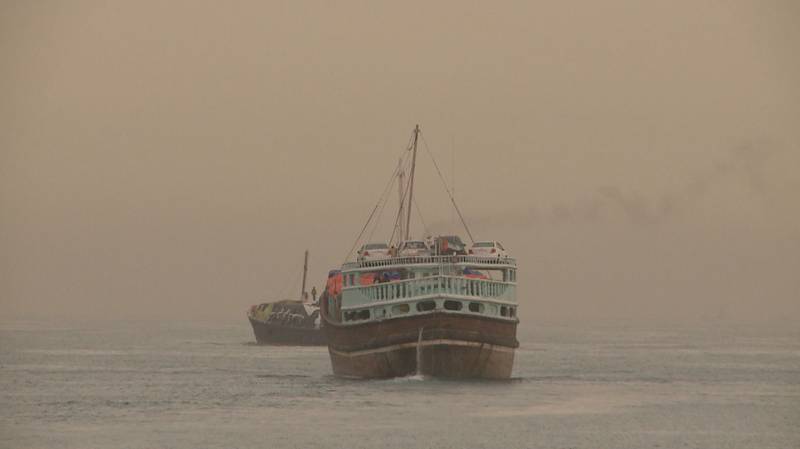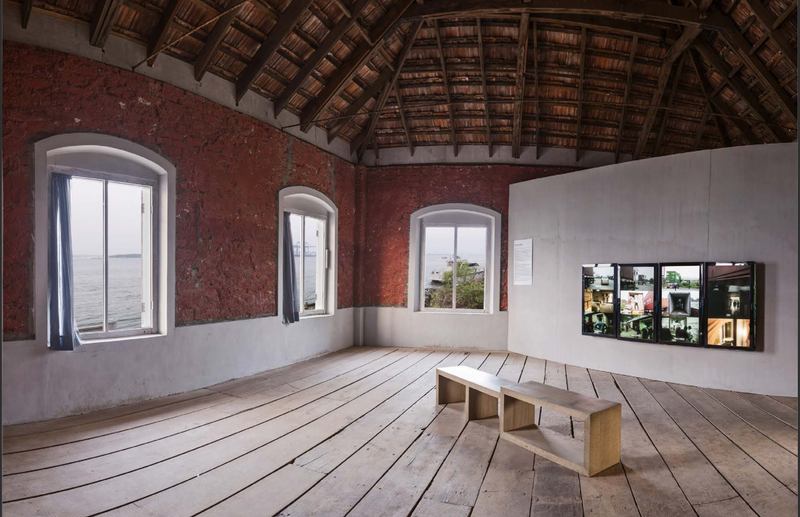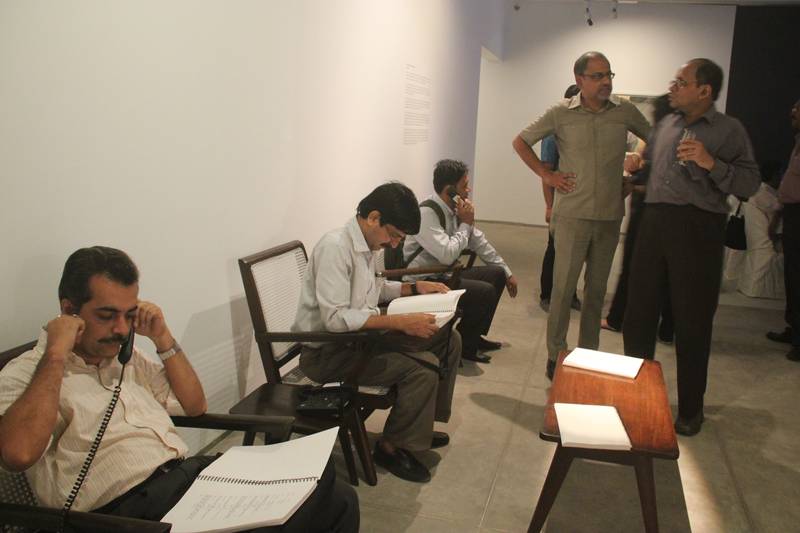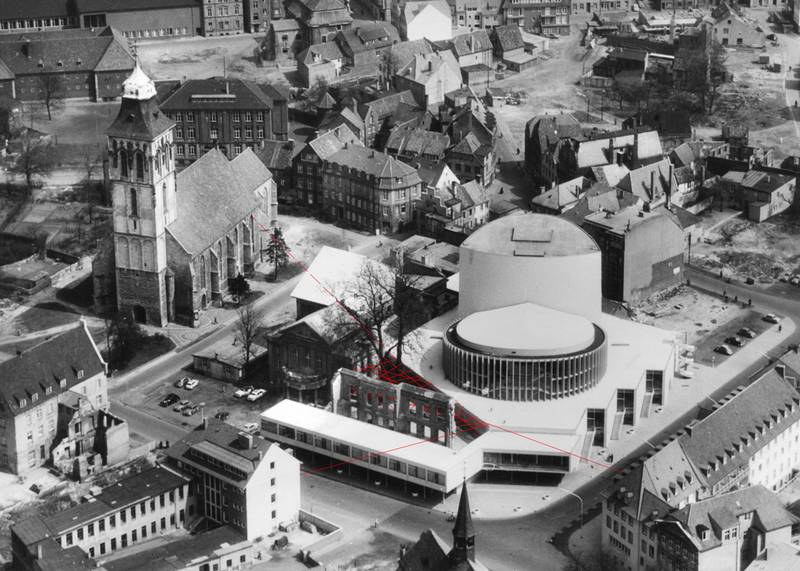
Matrix : Skulptur Projekt Münster, 2017
In 1956, the Stadttheater Munster is the first theatre in Germany to re-open after the war. And while most of the city of Munster was rebuilt as historic replica, an intervention by a group of young architects resulted in a “thunderclap" of bewildering pink mosaic tiles and blue glass wrapped around a fragment of ruin. A singular event in the city’s history, that probably would not happen again.
About 16 years after the gala opening of the theater, with its photographs of crowds looking in through the glass -- an artists group from a different zeitgeist proposed an outdoor “matrix" or dark mother sky of wires, as a symbolic counterpart to the 1200 hard-to-change lightbulbs of the interior “lamp sky” of the main theatre hall. Further, seizing the open ends of Norbert Kricke's “Spacetime Plastic" wire sculpture in the front of the theatre, they extended black wires outward till they hit the neighbour institutions: the Volksbank and Munster Zeitung, while ignoring the churches. They also claimed that the mesh sky was a reintroduction of the 4th wall of theatre, without clarifying further. Except to say that in the future, it could have something to do with our responses to surveillance.
In the mid-1980's, a youth connected the grid with an electric switch to the nearest church, via a hidden music synthesiser. This was followed by other peculiar inventions, such as in the early 1990's when a composer brought photographs, an old song, a film and a live feed from the bank into its own matrix, that could be experienced through the glass and without a ticket.
Uses of the matrix have continued since, and in the Munster Sculpture Project of 2017 you can see several of them together, as survivors and benders of time.
Acknowledgements
Virtual person in the Münstersche Zeitung window: Anna Viehoff
808 Church bells: Sneha Khanwalkar and Mark Fulgado
Screens on the theatre glass: Micheal Klier, Michael Anderson (film clips), Leo Strauss (lyrics), Stadtarchiv and StadtTheater (images from the 1956 opening)
Thanks: Britta Peters, Jan Bockholt, Christoph Schäfer















